Transforming Recruitment
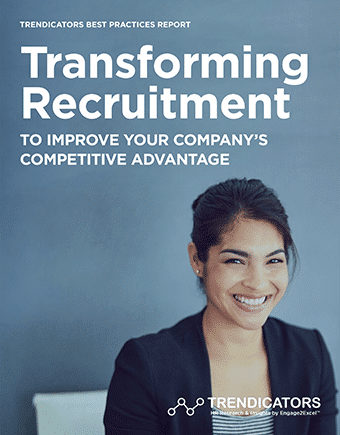
INTRODUCTION
The war for talent is a term that was coined by Steven Hankin of McKinsey & Company in 1997 to refer to an increasingly competitive landscape for recruiting and retaining talent. Today, this “war” has escalated to new heights, commanding the attention of CEOs across all industries.
According to research recently published by McKinsey, more than three-quarters of Fortune 500 CEOs do not believe their companies are effective at attracting highly talented people. Of those CEOs who do consider their companies successful at attracting top talent, only 7% believe they are effective in retaining them.
In today’s hyperconnected labor market, recruitment and retention are not separate problems; they are two sides of the same coin. Companies that have adopted integrated strategies for recruitment and retention have a significant competitive advantage. But according to McKinsey’s data, this group represents only a small fraction of the Fortune 500. The rest of the HR universe is under tremendous pressure to become more effective at attracting employees who care more, work smarter and stay longer.
This eBook provides research and insight for HR executives who want to achieve incremental improvements in their recruitment strategy to increase competitive advantage.
What’s Driving the Need for Transformation?
Three fundamental market realities are requiring organizations of all sizes to reexamine and transform how they recruit and retain employees:
The Importance of Passive Candidates: Demand for talent will far outpace the supply for the foreseeable future, forcing organizations to build relationships with passive candidates in addition to those who are actively seeking employment.
The Consequences of Buy-Side Thinking: Today’s labor market is candidate-driven. Many organizations, however, are still recruiting with a buy-side mindset. This can result in candidates sharing their recruitment experiences on social media in a way that negatively impacts employer brands and dilutes recruiting effectiveness.
The Difference Between Sales and Delivery: Although HR organizations are now attempting to adopt marketing best practices to build their talent pipelines, leakage occurs in the form of high turnover rates when candidates’ actual employee experiences do not meet their expectations.
Transforming Recruitment to Achieve Your Company’s Competitive Advantage poses five questions for HR and recruitment leaders to use as a framework for evaluating and improving their recruitment strategy:
How can you build a more effective employee value proposition (EVP)?
Are you using content and candidate nurturing to build your talent pipeline?
Do you have the recruitment marketing tools you need to attract top talent?
What can you do to improve candidate experiences and outcomes?
How can you better align recruitment processes to compete more effectively for talent?
Download
 hbspt.cta.load(123973, '8052d2b2-616f-48b0-8d60-cd3e7641d387', {});
hbspt.cta.load(123973, '8052d2b2-616f-48b0-8d60-cd3e7641d387', {});
TODAY’S RECRUITMENT CHALLENGES AT A GLANCE
The lowest unemployment rate in nearly two decades combined with a positive economic outlook for sales growth has a significant percentage of recruiters and their CEOs worried that they won’t find the talent they need to meet the demand for new hires. This underscores the need to pursue prospects who are not actively seeking new job opportunities. Millennials, who will comprise 75% of the workforce by 2025, place a high priority on social interaction and recognition during the pre-hire process, driving the need for more personalized experiences in the recruitment process.
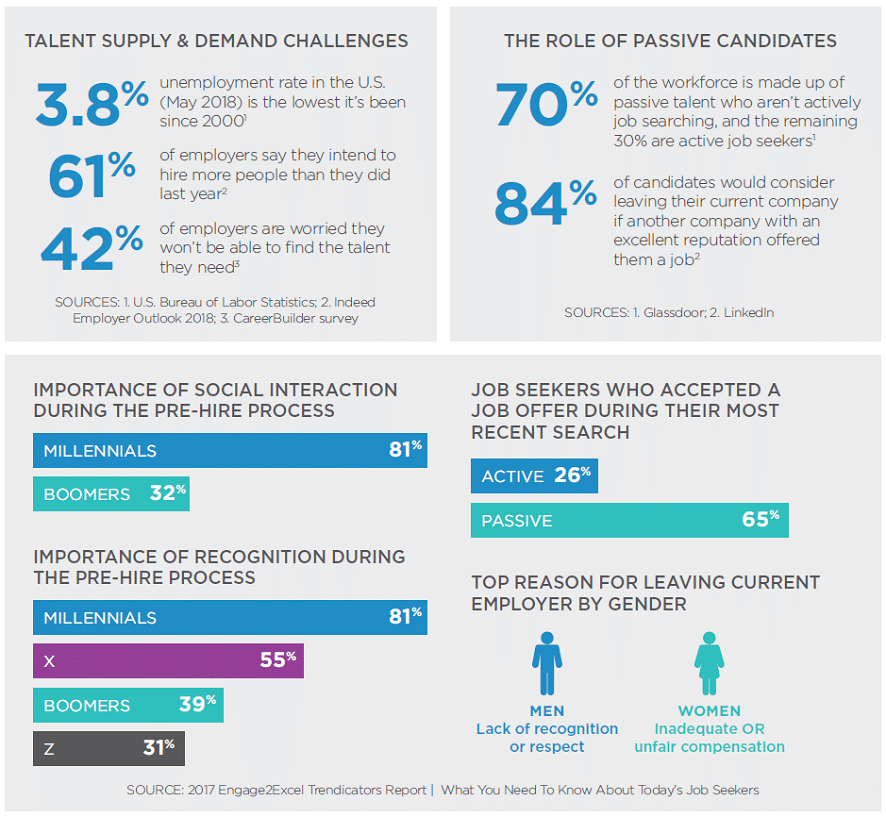
Download
 hbspt.cta.load(123973, '8052d2b2-616f-48b0-8d60-cd3e7641d387', {});
hbspt.cta.load(123973, '8052d2b2-616f-48b0-8d60-cd3e7641d387', {});
What kinds of experiences are you creating for candidates?
There is a great deal of discussion in HR circles about the need to improve candidate experiences. The reality is that an astonishingly high percentage of employers fail to extend common courtesy to applicants and candidates through personalized communications at each touchpoint in the recruitment process. This not only results in negative experiences and brand perceptions that are amplified via social media, but it also overlooks the fact that every applicant, if treated respectfully, could become a referral source, candidate, or customer in the future.
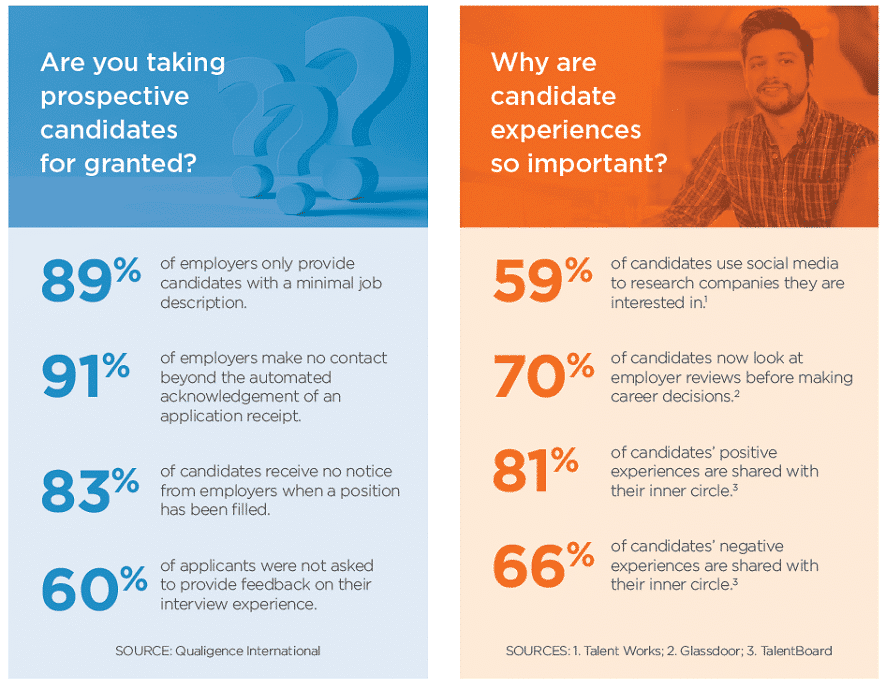
Download
 hbspt.cta.load(123973, '8052d2b2-616f-48b0-8d60-cd3e7641d387', {});
hbspt.cta.load(123973, '8052d2b2-616f-48b0-8d60-cd3e7641d387', {});
How would you characterize your current recruitment strategy?
Organizational transformation of any sort begins with an assessment of your company’s current state, with the goal of improving its capabilities to achieve a desired future state. The maturity model below can serve as a quick assessment tool. Plot your recruitment organization’s current and future states according to the five core capabilities listed in the far-left column. The ultimate goal of your recruitment transformation initiative should be to partner with internal business customers to anticipate hiring needs and optimize sourcing and recruitment functions using analytics to progressively improve candidate experiences and hiring outcomes.
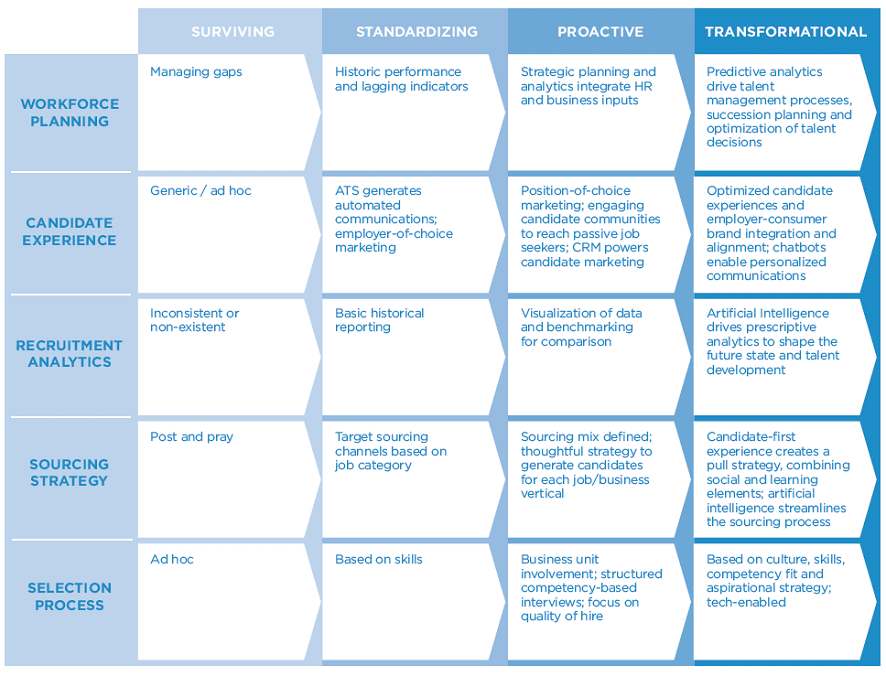
Download
 hbspt.cta.load(123973, '8052d2b2-616f-48b0-8d60-cd3e7641d387', {});
hbspt.cta.load(123973, '8052d2b2-616f-48b0-8d60-cd3e7641d387', {});
How can you build a more effective employee value proposition (EVP)?
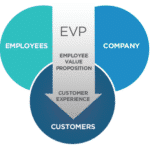
ALIGN YOUR EVP WITH YOUR CORPORATE STRATEGY
Your organization’s culture, values, vision and business goals are unique. Your EVP should be equally unique and should define everything your company does to attract, engage, motivate and reward employees to create value for its customers. Your EVP is a promise that explains in simple, easy-to-understand language why an employee would want to work for your company as opposed to anywhere else.
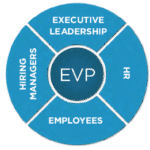
DEFINE ROLES FOR YOUR EVP STAKEHOLDERS
Different stakeholders within your organization have different responsibilities for bringing your EVP to life. Your leadership team is responsible for communicating the EVP to internal and external audiences. HR defines and manages the delivery of the EVP. Hiring managers enable and deliver it through their day-to-day interactions with employees and candidates. Employees are the ultimate EVP stakeholders. They’ll tell you whether or not your company is actually delivering on its value proposition.
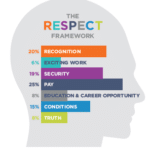
UNDERSTAND WHAT YOUR EMPLOYEES REALLY WANT
Employee engagement surveys provide objective, scientifically-valid insights to use in formulating your EVP and evaluating its relevance over time. For example, the RESPECT framework for measuring employee engagement from Engage2Excel enables you to benchmark employee engagement levels against those in your industry sector as well as against best practices organizations.
GET HELP FROM MARKETING IN CREATING YOUR EVP
Engage your internal marketing team early in the process of developing your EVP and in creating the communications programs, tools and experiences that will help make it compelling and relevant. As the stewards of your corporate brand, they can provide the expertise, resources and guidance needed to ensure strategic alignment with enterprise positioning and differentiation.
Download
 hbspt.cta.load(123973, '8052d2b2-616f-48b0-8d60-cd3e7641d387', {});
hbspt.cta.load(123973, '8052d2b2-616f-48b0-8d60-cd3e7641d387', {});
Are you using content marketing and candidate nurturing to build your talent pipeline?
In today’s job market, the same principles your marketing department uses to build a pipeline of customer prospects can be applied to build a pipeline of employee candidates. Whether you are attempting to attract customers or employees, there are three distinct phases that define where prospects are in a pipeline: awareness, engagement and consideration. Content marketing programs foster advancement through each stage by delivering targeted communications, activities and experiences. The table below lists examples of the types of content and experiences you can use to improve the effectiveness of your recruitment marketing program.
“Content marketing is an essential component for
creating an effective recruitment marketing campaign.”
DARREN FINDLEY, PRESIDENT
ENGAGE2EXCEL RECRUITMENT SOLUTIONS
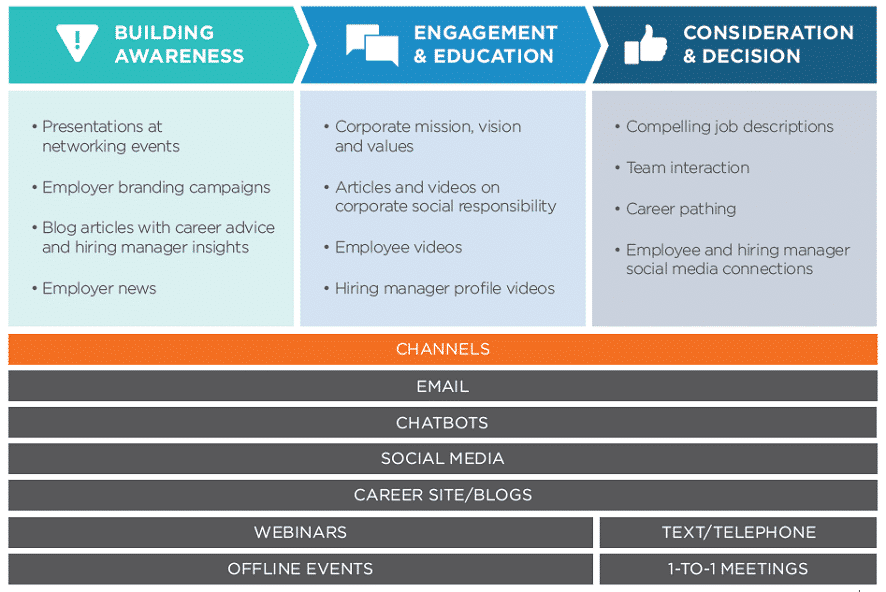
Download
 hbspt.cta.load(123973, '8052d2b2-616f-48b0-8d60-cd3e7641d387', {});
hbspt.cta.load(123973, '8052d2b2-616f-48b0-8d60-cd3e7641d387', {});
Do you have the recruitment marketing tools you need to attract top talent?
What tools will you need to compete more effectively in today’s candidate-driven job market? Listed below are a few examples that are often either overlooked or underutilized. Use these suggestions as a starting point for brainstorming and discussion. Work with with your sourcers, recruiters, internal business partners and marketing experts to build a more comprehensive list of recruitment marketing tools, assets and programs.
Job Description Creation: Do your job descriptions go beyond basic requirements and duties to uniquely convey your position and company as the opportunity of choice for candidates? Poorly crafted job descriptions result in wasted time with the wrong candidates, contribute to higher turnover and don’t present a compelling and realistic representation of your job opportunities. A survey by management consultancy Hay Group revealed that 90% of HR managers believe that good job descriptions lead to better qualified candidate pools.
EVP Messaging Playbook: Your EVP is an important asset to use in differentiating your company. An EVP messaging playbook helps ensure consistent and compelling messaging across corporate divisions, recruiting partners and channels. Often overlooked, however, is the vital role that recruiters and hiring managers need to play by delivering the EVP to candidates in an authentic and personalized manner. Make sure your EVP playbook includes sample scripts and scenario-based sketches to help stakeholders bring your EVP to life.
Training for Recruiters and Hiring Managers: Does your organization have a formal program in place for training sourcers, recruiters and hiring managers? If not, your ability to scale recruitment programs is severely limited. Training should include how to best do an internal discovery call to gain consensus on all the key attributes of a candidate, top sourcing techniques that can be used in identifying your target market and behavioral-based interviewing techniques for hiring managers and recruiters.
Social Media Advertising: Paid social media campaigns provide an excellent way to supplement your organic, inbound recruitment advertising. The average click-through rate for ads on Facebook is 0.9% with an average cost per click of just $0.64, which makes such campaigns affordable for both large and small businesses. Whether you opt for authentic employee profiles or use humor and creativity to engage your audience, utilizing Facebook, Instagram and LinkedIn can help you increase brand awareness and reach potential hires via highly targeted campaigns.
Download
 hbspt.cta.load(123973, '8052d2b2-616f-48b0-8d60-cd3e7641d387', {});
hbspt.cta.load(123973, '8052d2b2-616f-48b0-8d60-cd3e7641d387', {});
What can you do to improve candidate experiences and outcomes?
Transforming recruitment operations won’t happen overnight. It’s a time-consuming process that requires clearly defined objectives, a prioritized roadmap and ongoing project management. Usually, the biggest challenge is deciding where to begin. The table below lists ideas for improving experiences and outcomes at each stage of the recruitment lifecycle. As with the other suggestions provided in this eBook, these ideas are offered as starting points when developing plans for building your organization’s recruitment transformation initiative.
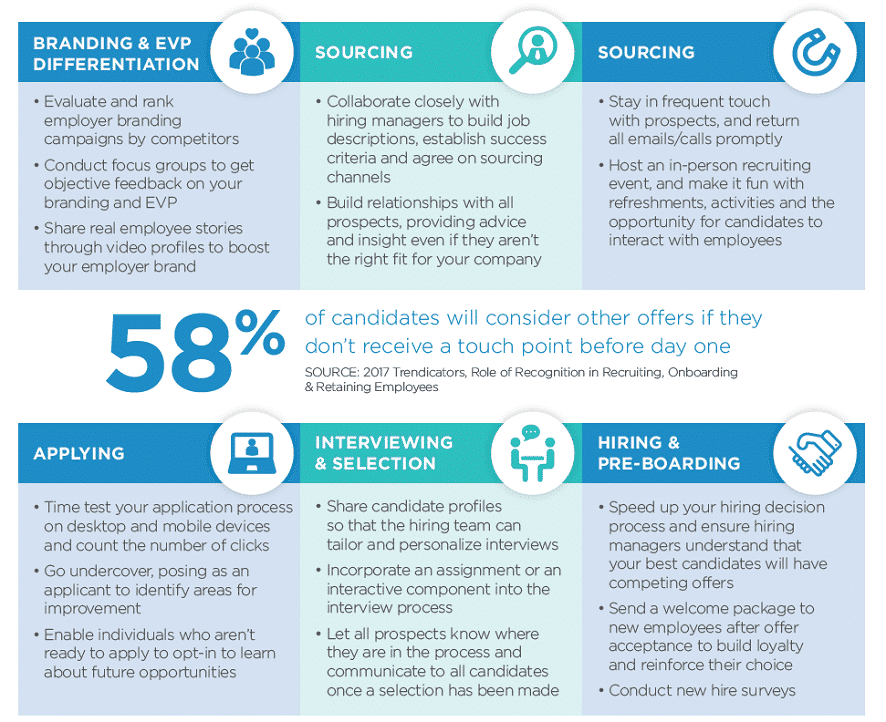
Download
 hbspt.cta.load(123973, '8052d2b2-616f-48b0-8d60-cd3e7641d387', {});
hbspt.cta.load(123973, '8052d2b2-616f-48b0-8d60-cd3e7641d387', {});
How can you better align recruitment processes to compete more effectively for talent?
In the introduction, we explained that improving recruitment and retention has become a top priority for CEOs and, as a result, an operational imperative for HR leaders. One challenge for many organizations, however, is that recruitment functions are often performed in a disparate and disconnected manner. In building your plan for transforming recruitment to improve your competitive advantage, it is imperative to win support from your senior leadership for an integrated business model that aligns recruitment processes, functions and resources to achieve measurable outcomes.
“Organizations that invest in a strong candidate experience
improve their quality of hires by 70%.”
BRANDON HALL, THE TRUE COST OF A BAD HIRE
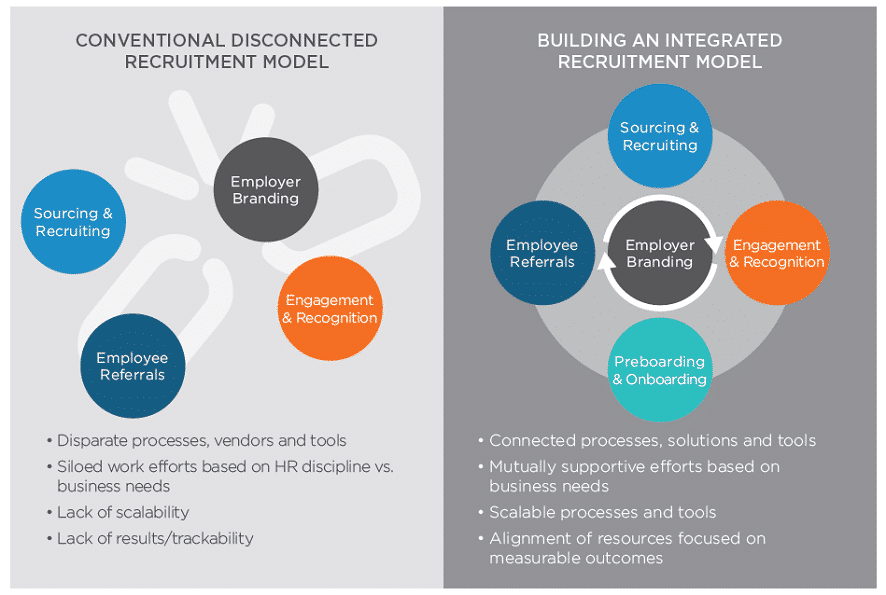
Download
 hbspt.cta.load(123973, '8052d2b2-616f-48b0-8d60-cd3e7641d387', {});
hbspt.cta.load(123973, '8052d2b2-616f-48b0-8d60-cd3e7641d387', {});